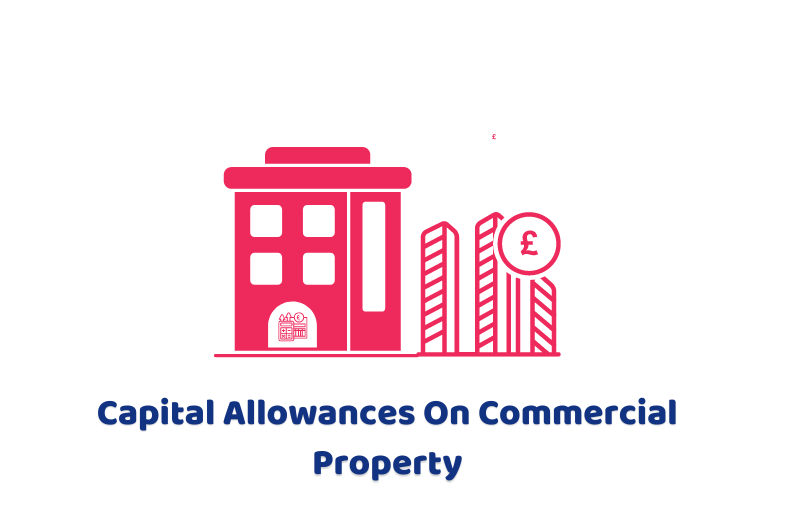It has been estimated that many businesses and commercial property owners fail to claim back their deductible expenses every year. The primary reason behind this ignorance is the complex structure of tax legislation and the ambiguous requirements of capital allowances on commercial property.
A number of capital allowances are offered by the HMRC and they have been categorised into major sections. However, if you have purchased, sold or own a commercial property, you will need to go through the proper due diligence and your accountant can help you get the maximum capital allowance for you.
We are going to discuss capital allowances and how you can reclaim them. Besides, we will throw light on different types of capital allowances you can claim on your commercial property. So, let’s move on!
AccountingFirms can assist you in managing your tax liabilities with the maximum tax relief possible. Let’s talk to one of our professionals and a dedicated accountant or tax advisor to get a favourable tax solution.
What are Capital Allowances and Why are they Important?
Capital allowances are the deductible expenses incurred on the purchase or repairing of the land, property or machinery. These expenses get tax relief in the form of capital allowances as they are used for business purposes only.
Similarly, if you have a commercial property and incurred expenses on the purchase, refurbishment or fitting out work, then you can claim capital allowances on your commercial property in your tax bills. That being said, the reality becomes different when many commercial property owners fail to reclaim those deductible expenses due to various reasons.
If you claim successfully and accurately the capital allowances, you will enjoy tax relief and can get even, in some cases, the 100% of the costs you have incurred. On the other hand, it will make the cash flow seamless with the availability of more cash for your business. As a result, with no more tax liability will come less financial burden due to the reduced business expenses.
Following is the list of the qualifying items for the capital allowances as described by the HMRC:
- Plant and Machinery
- Integral Features
- Fixtures
Plant and Machinery: Plant and machinery consist of the business equipment, machinery, land and business vehicles.
Integral features: These are the expenses incurred on the heating and cooling systems, hot and cold water, electricity, solar energy system, lifts and escalators.
Fixtures: Fixtures are those expenses where a business incurs expenses on the kitchen, bathroom suites and the surveillance & alarm system.
What are the Types of Capital Allowances on Commercial Property?
Different types of capital allowances are provided by the HMRC to the owners of the commercial property, depending on the kind of costs of the purchase, renovation and fittings. Following is the list of capital allowances:
Annual Investment Allowance (AIA): Annual Investment Allowance allows the 100% refund of the business expenses before taxes. The capital allowance can be deducted in full from the profits before taxes. However, you have to pay taxes if you sell your property after deducting the Annual Investment Allowance (AIA).
Structures & Building Allowance: Structures & Building Allowance is a type of capital allowance on commercial properties where you buy, lease or start construction work on or after 29th October 2018. You can claim SBA on the construction design fee, renovating the construction site, conversion costs and fitting works on the new building.
Super Deduction Allowance: Super deduction allowance is the most fascinating way to encourage business owners to invest in land and machinery. It gives a refund of 130% on the business expenditures on your commercial property and equipment.
Writing down Allowance: This allowance is applicable where you cannot deduct Annual Investment Allowance from your profits. For example, the business vehicles with the lowest possible carbon emissions can deduct a higher percentage as writing down allowance from their profits every year.
How Can I Claim Capital Allowances on Commercial Property?
You can claim capital allowance on commercial property in the same accounting period in which the expenses were incurred. However, the owner can claim these allowances after the accounting period ends. One interesting fact to mention here is that if you purchased a property and the previous owner did not claim the capital allowances, you can avail of this opportunity by claiming the capital allowances.
The Bottom Line
Lastly, capital allowances become tricky as the nature of expenditures may vary from one business to another. So, it is essential you consult with financial experts and take their help for claiming the maximum capital allowances on your commercial properties.
Moreover, if you have not claimed any type of capital allowances on your commercial property, you can do it right now without any further delay as it will help you get more cash flow eventually.
We are committed to delivering excellent and exceptional accounting services to our valuable clients in the United Kingdom to ensure they get the most professional financial solution to their accounting problems. Contact us now!
Disclaimer: All the information provided in this article on Capital Allowances on Commercial Property, including all the texts and graphics, is general in nature. It does not intend to disregard any of the professional advice.

